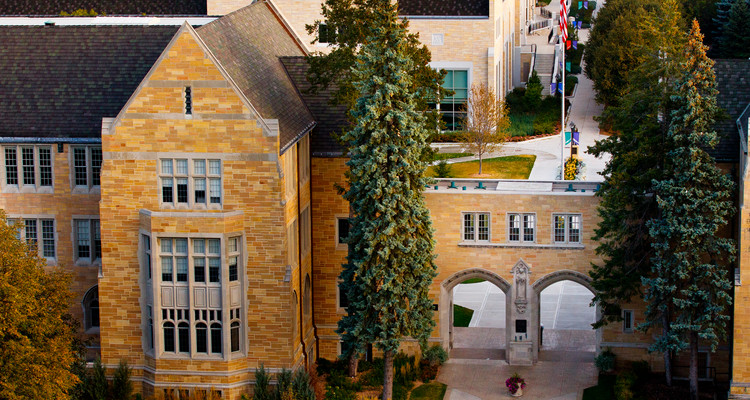The Carnegie Foundation for the Advancement of Teaching, which serves as a national policy analysis and research center for higher education, has selected 240 U.S. colleges and universities, including the University of St. Thomas, for its 2015 “Community Engagement” classification.
St. Thomas was the only private university in Minnesota selected for the classification when it was new in 2006, and only two other state institutions – the University of Minnesota-Twin Cities and Winona State University – were included in the Community Engagement class. Since then, seven Minnesota schools have received classification: Augsburg College, Gustavus Adolphus College, Macalester College, Metropolitan State University, St. Catherine University, St. Cloud State University and the University of Minnesota-Morris.
Today, St. Thomas is one of 361 institutions that holds the Community Engagement classification (some institutions were classified in 2010). The university will retain its Community Engagement classified status until 2025. Carnegie classifications are used for a wide range of purposes by academic researchers, institutional personnel, policymakers and others.
Unlike the foundation’s other classifications that rely on national data – such as those that describe college and university undergraduate and graduate programs, enrollment profile, size and setting – Community Engagement is an elective classification. Institutions chose to participate by submitting documentation describing the nature and extent of their engagement with the community; thus, the foundation can "address elements of institutional mission and distinctiveness that are not represented in the national data on colleges and universities."
In a letter, the Carnegie Foundation stated: “Your application documented excellent alignment among campus mission, culture, leadership, resources and practices that support dynamic and noteworthy community engagement, and it responded to the classification framework with both descriptions and examples of exemplary institutionalized practices of community engagement in a coherent and compelling response to the framework’s inquiry.”
The foundation defines community engagement as: collaboration between institutions of higher education and their larger communities (local regional/state, national, global) for the mutually beneficial exchange of knowledge and resources in a context of partnership and reciprocity.
“The passion and commitment to community engagement at St. Thomas are impressive. Faculty, staff, students, trustees, parents and alumni have all been involved in meaningful civic engagement,” President Julie Sullivan said. She added, “We will continue to develop a robust and responsive program of community engagement at St. Thomas.”
St. Thomas provided a self-study in connection with its application for inclusion in the Community Engagement category. The self-study describes the many types and examples of community engagement throughout the university, including:
- The School of Law’s Mentor Externship program has been ranked the No. 1 externship program in the country since 2010 by Pre Law Magazine. A network made up of 500 respected lawyers and judges, the program connects students with a legal professional in their area of interest who helps students gain work experience.
- The Department of Campus Life reported that every university-sponsored student club or activity must complete at least 1.5 service hours per member to be eligible for university funding. In the 2012-2013 academic year, 143 student clubs and organizations completed 25,144 service hours.
- In 2013, the university conducted a self-study to seek accreditation from the Higher Learning Commission. The university reported that since 2007 more than 6,200 students (duplicated count) across the institution have enrolled in courses with a designated service-learning component. In six years (2007-2013), the number of Business 200 sections (service requirement for prospective business majors) increased by 331.25 percent with 16 sections in 2007 and 69 sections in 2013.
- Under the direction of President Julie Sullivan in early 2014, St. Thomas was engaged in a universitywide strategic planning process aimed at guiding the institution into the future. Two goals identified at the time were:
- Goal: The University of St. Thomas will become a national leader in Catholic higher education, attracting and retaining excellent students both regionally and nationally, through the practice of disciplinary and interdisciplinary inquiry that promotes deeper intercultural understanding within an ever-changing context, and inspires students, faculty, staff and alumni to lead, work and serve with empathy.
- Goal: The University of St. Thomas will be recognized as an inclusive and welcoming Catholic community that transforms persons and their communities through sustained opportunities for personal reflection, ethical development, service to and dialogue between various communities.
A listing of the institutions in the Community Engagement classification can be found on the Carnegie Foundation website.






